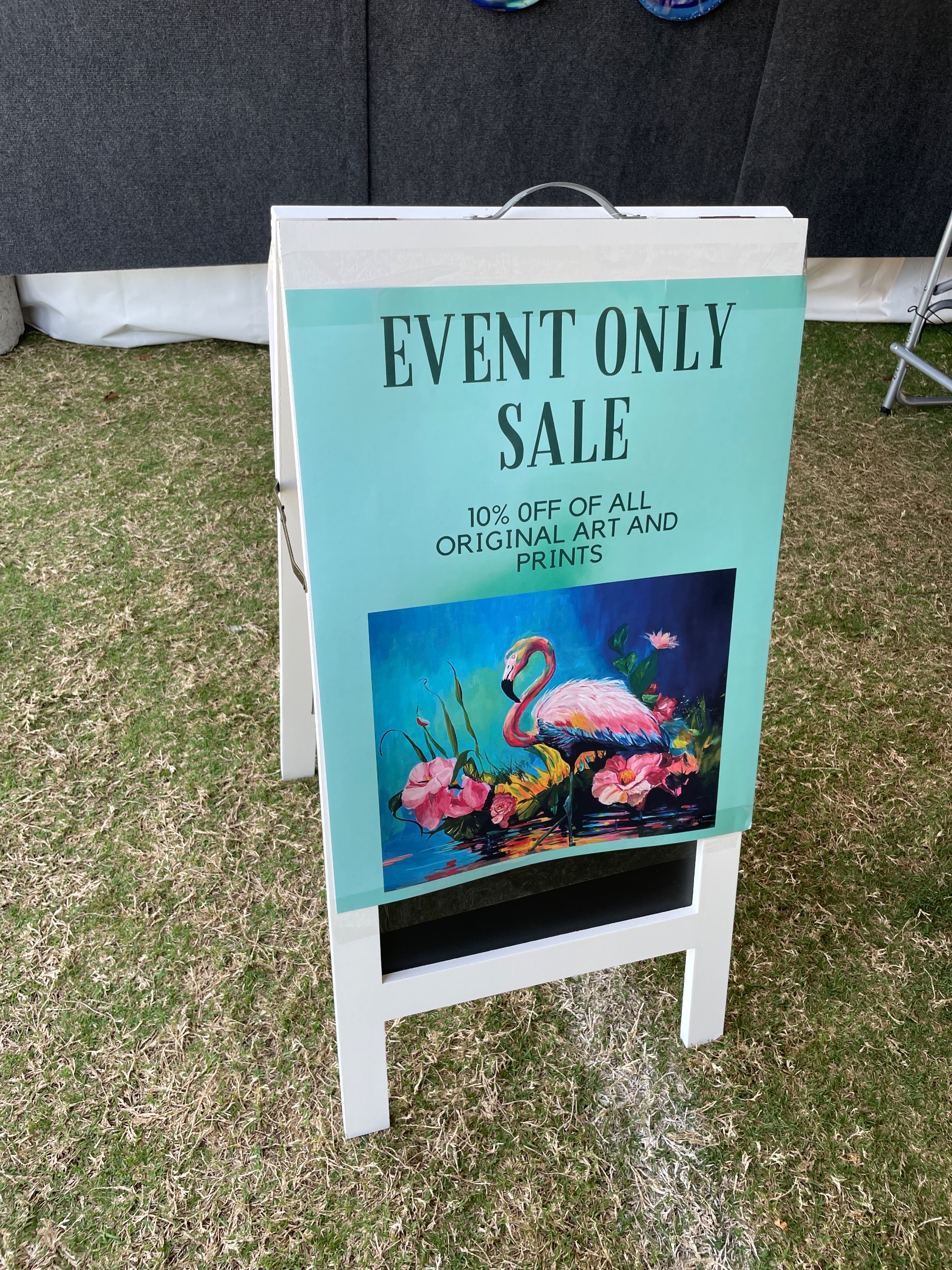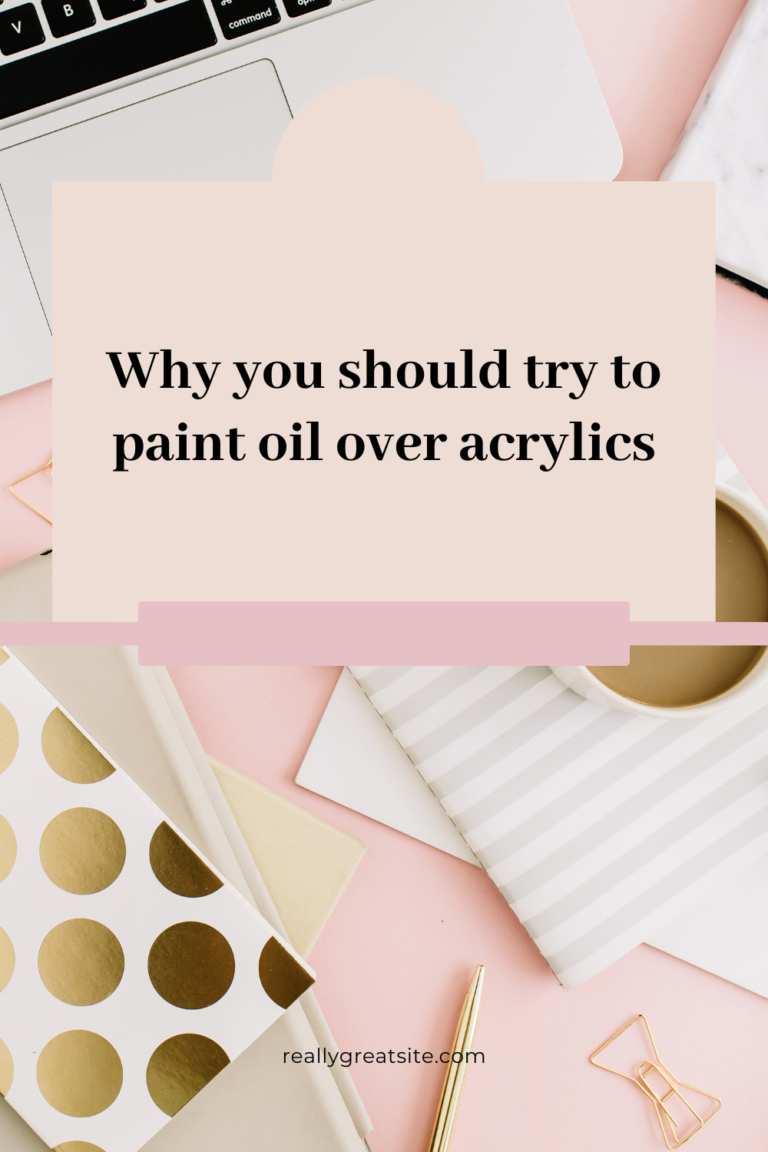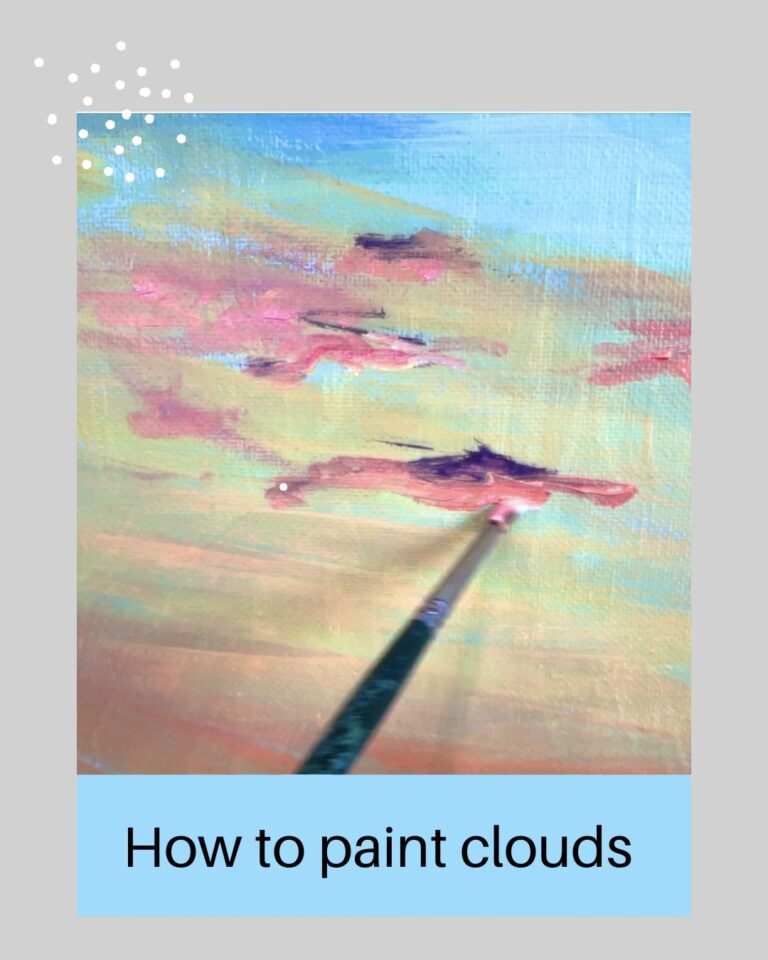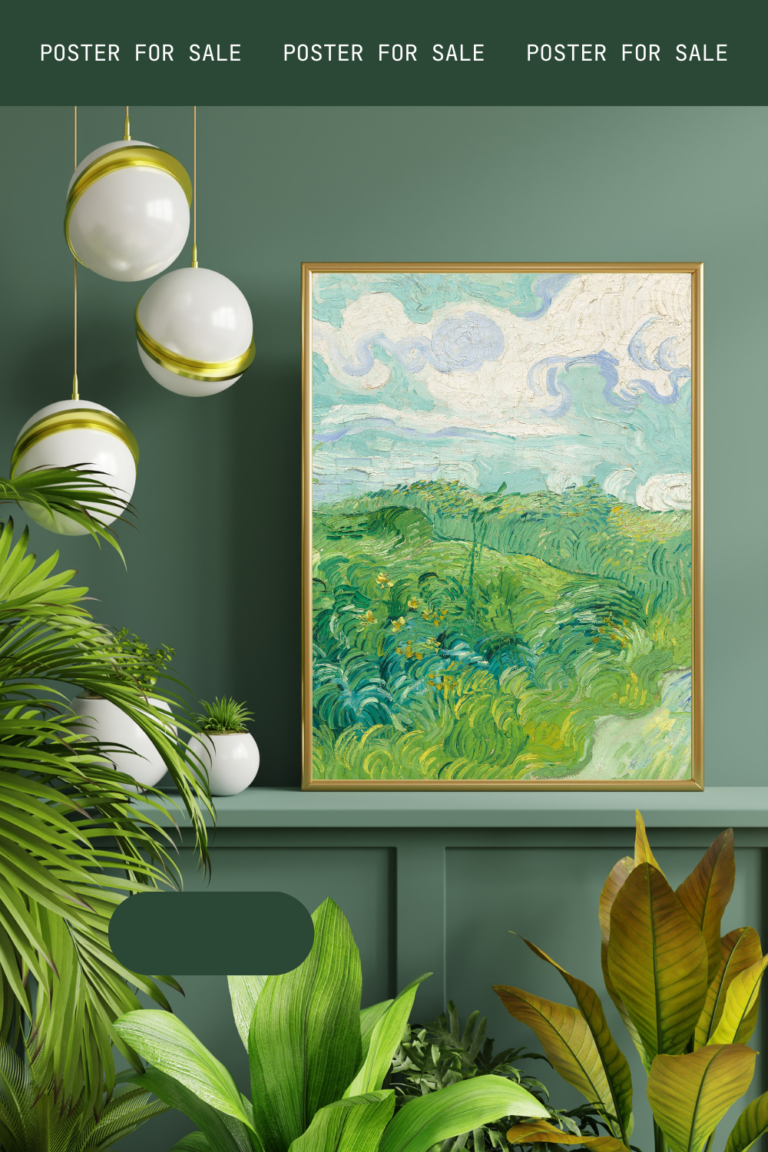Before the show, I tuned into an episode of an artist’s podcast. The host discussed the appeal of offering discounts, suggesting putting up signs for giveaways, and so forth—because everyone loves a good deal, right?
Motivated by this advice, I invested both money and time in designing two big, beautiful posters. I also purchased a stand-up wooden sign to display them. One side announced, “For this event only, enjoy a 10% discount,” while the other side invited visitors to “Enter your email address to win an original painting by Ying McLane,” complete with a prominent QR code. The setup was visually appealing, and I was quite proud of it.

On the first day of the art show, after setting up my paintings and signs, I introduced myself to my neighboring artists, mentioning it was my first art show and expressing my appreciation for any advice.
After a brief trip to the restroom, I returned to find an older lady from across my booth walking over to me hastily. She said, “I don’t mean to be rude, but you need to take those signs down. The promoters and other artists won’t appreciate them. This is a high-end show. I made the same mistake at my first show and had to remove my signs.”
Gratefully, yet sheepishly, I removed the beautiful signs and stashed them behind my tent.
This was my first lesson: High-end art shows do not allow promotional signs, even hand-written title signs within your booth, in order to maintain their standards. You will find these rules in their contracts.
While you can offer discounts to customers who inquire, advertising such offers in your booth is discouraged. After all, have you ever seen a discount sign in an art gallery window? Art isn’t a necessity; people purchase it for the feelings of beauty and prestige it evokes.
A story that stuck with me involves an artist who sold a painting for $20,000 at one art show, whereas the same painting was priced at $800 at another show months earlier. A potential customer remarked, “I won’t hang a $800 piece of junk in my three-million-dollar home.”
My second lesson was to take advice heard on social media with a grain of salt.
The podcast host, who purportedly runs a successful art marketing mentoring business, seemed credible, especially given the numerous ads I’d seen on Facebook.
However, I soon realized that many so-called artist mentoring programs are run by individuals who haven’t necessarily succeeded financially as artists but have learned effective marketing techniques.
Essentially, they’re marketing their marketing strategies to sell their mentoring programs. It’s essential to be selective with the advice you follow to avoid embarrassing mistakes like mine.
Thirdly, the importance of humility and kindness was reaffirmed. Had I not made the effort to speak to the older lady initially, she might not have offered her candid advice, possibly preventing significant embarrassment or even expulsion from the show.
Are you enjoying this series so far? I’d love to hear your feedback.
In my next post, I’ll share another mistake of mine that you could easily avoid if you’re planning to attend art shows in the future.
Ying




